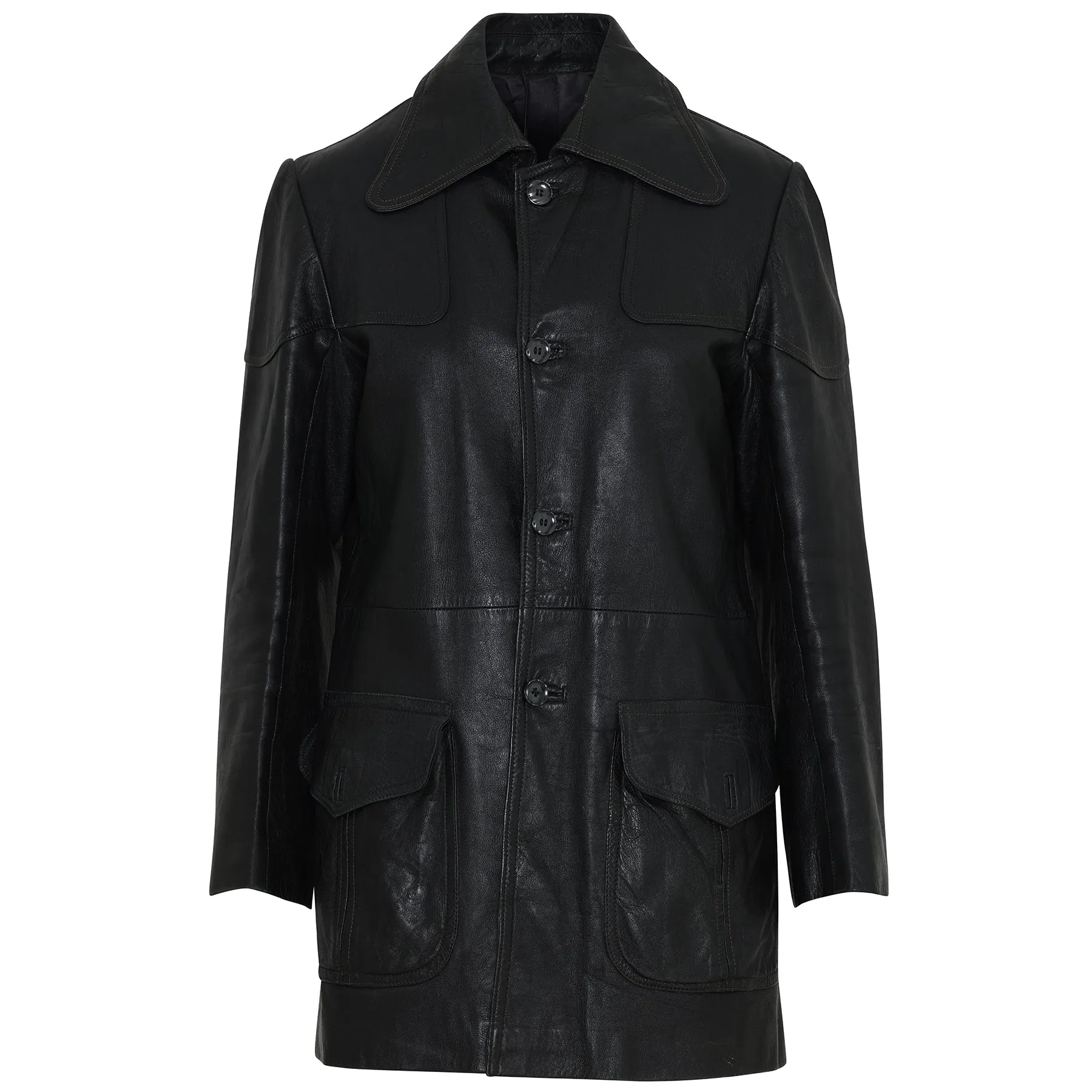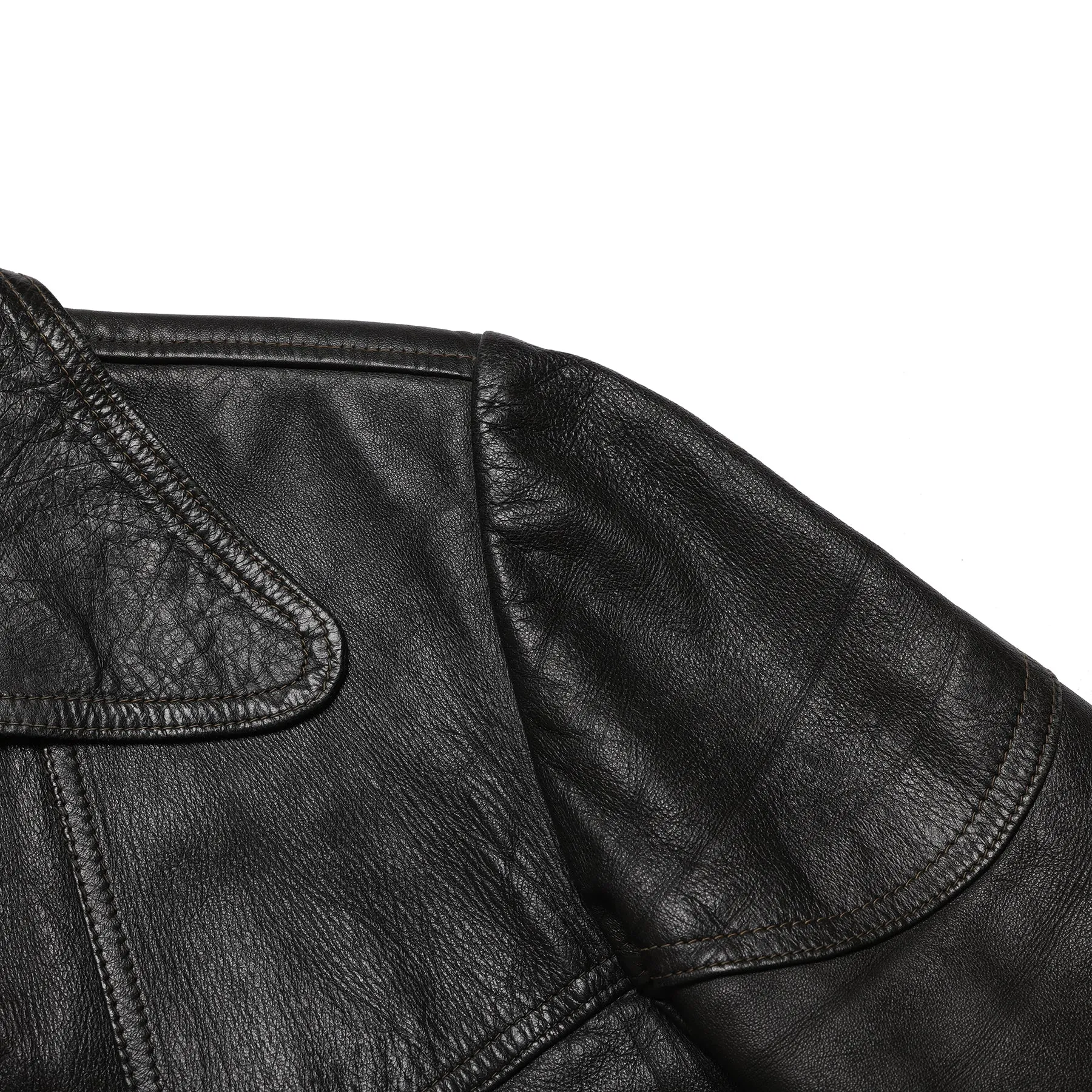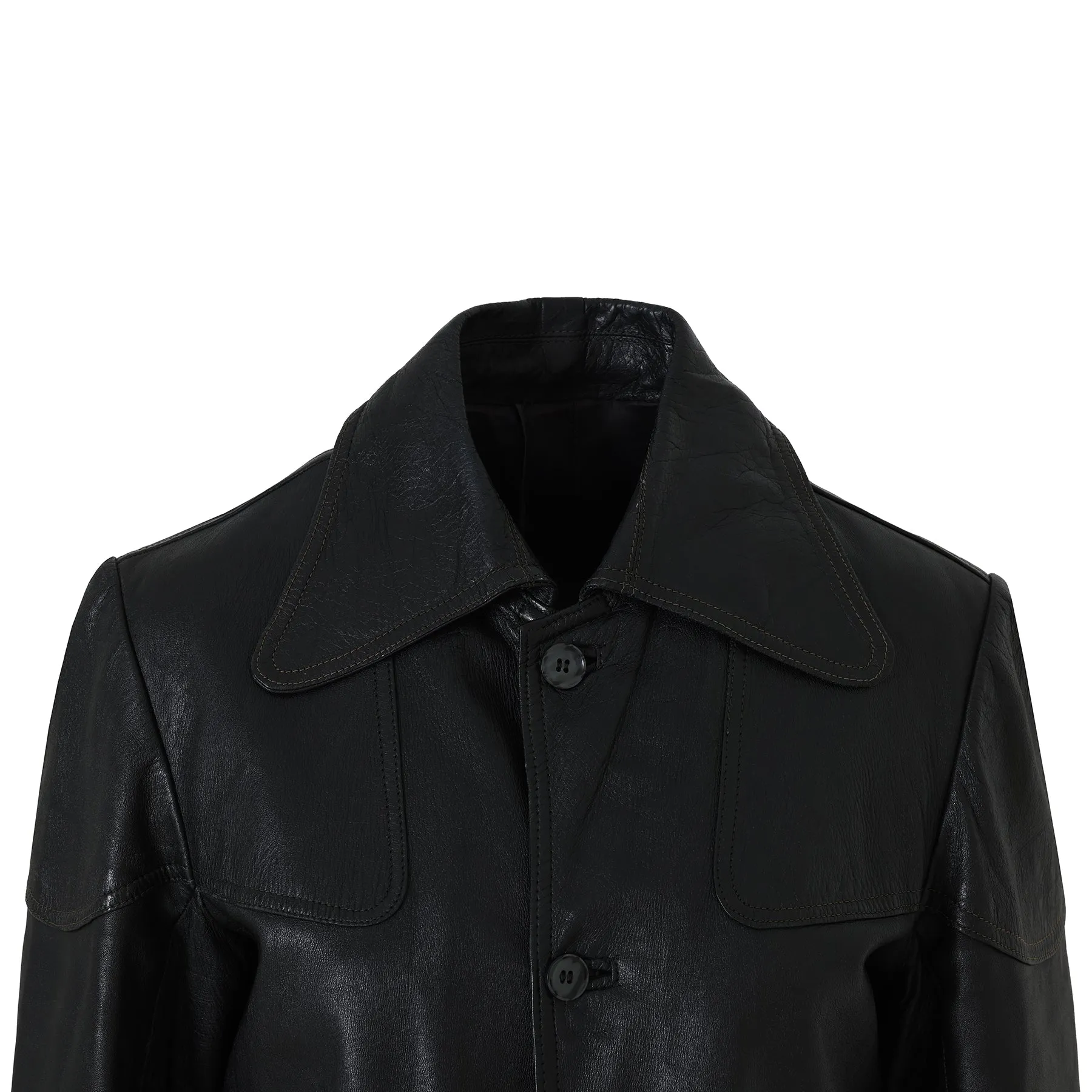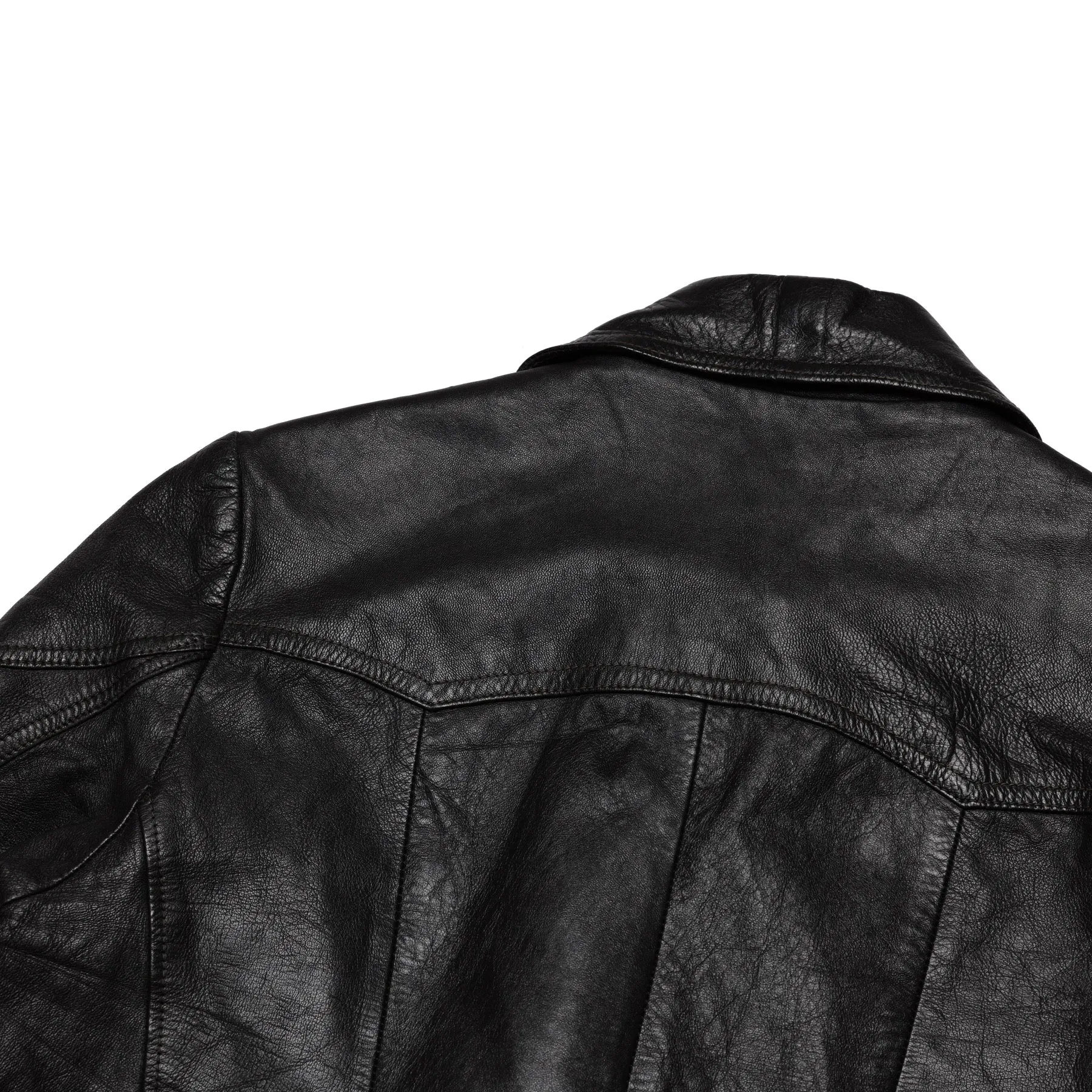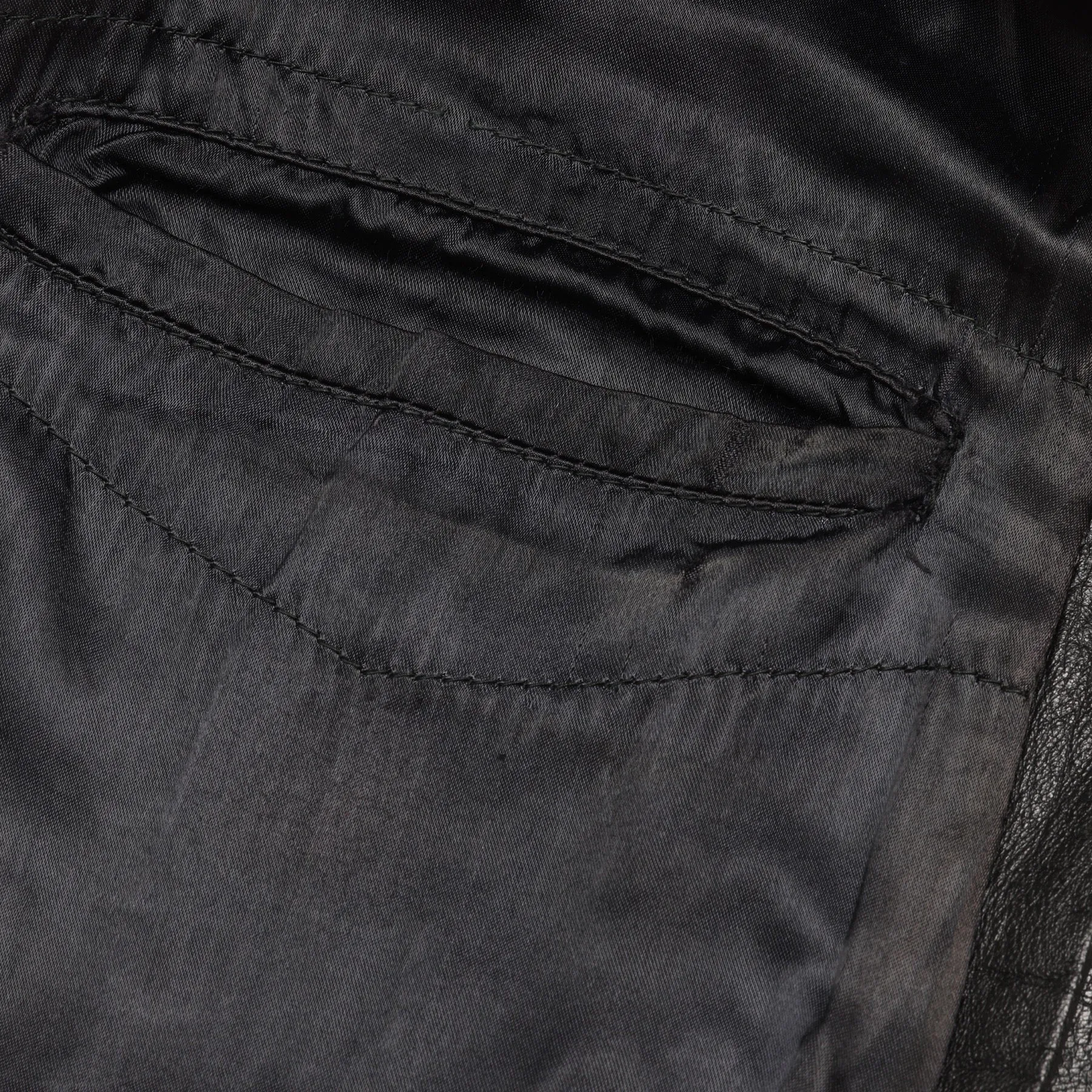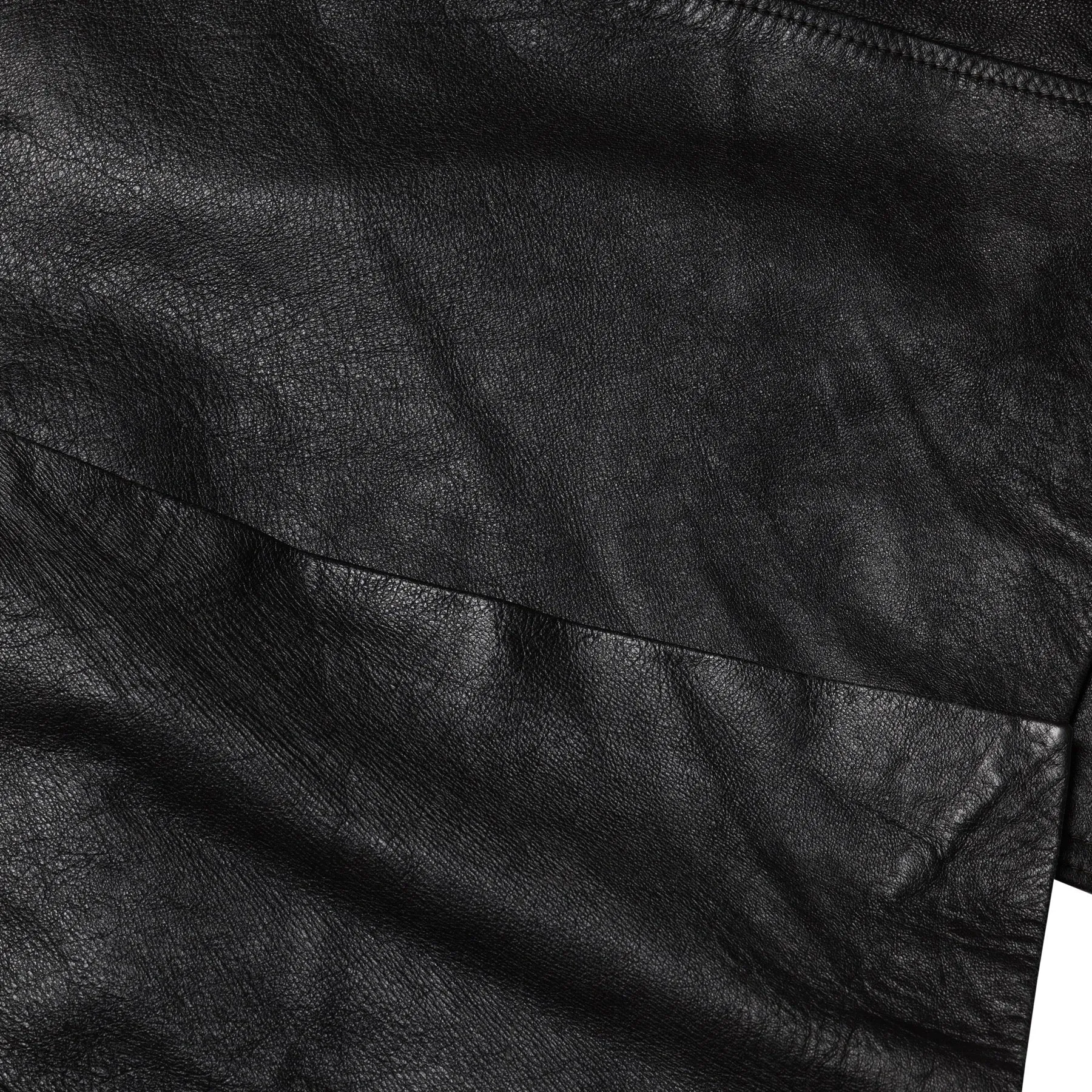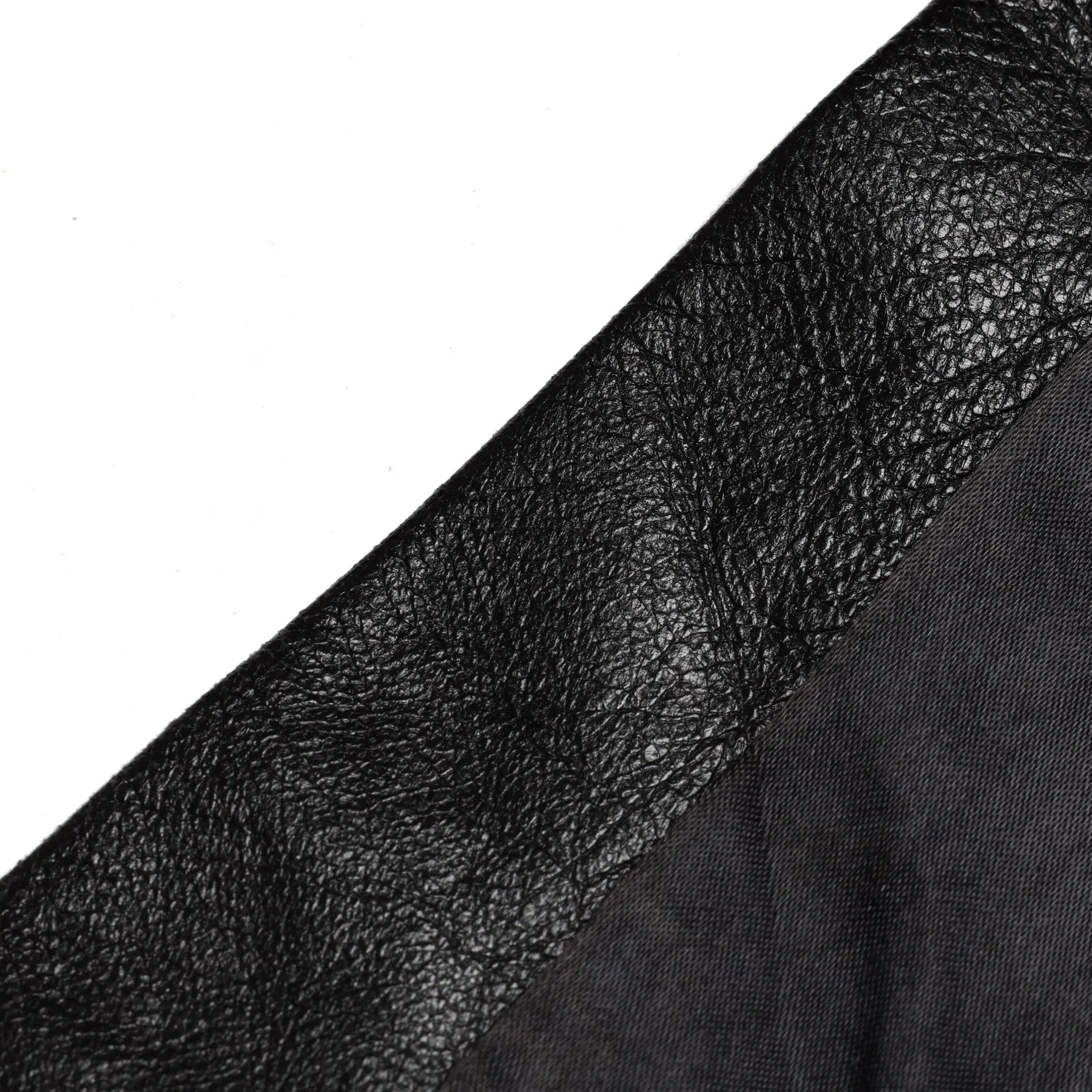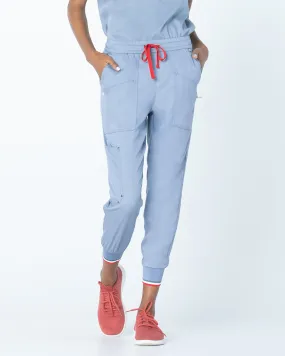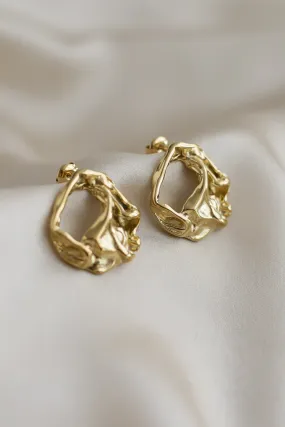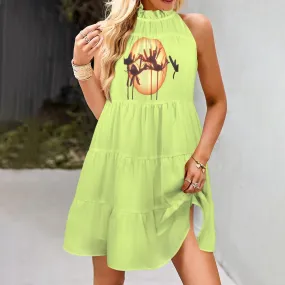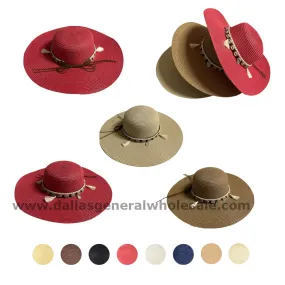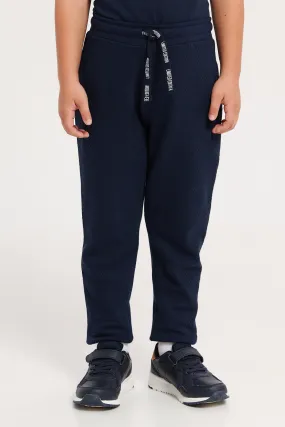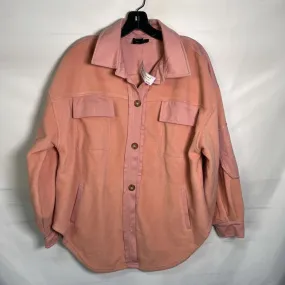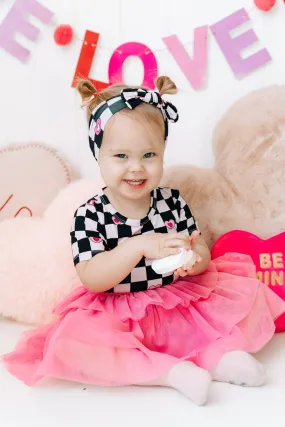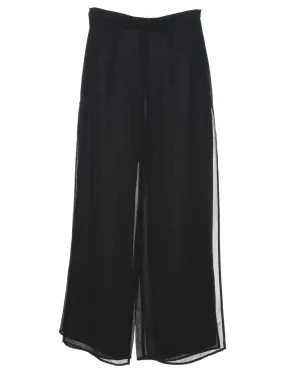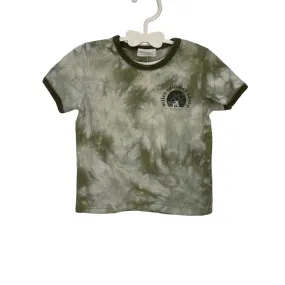Ergonomic two-piece sleeves, princess seams, and triple-yoke structuring optimize mobility, silhouette clarity, and upper-body articulation.
The women’s mid-length black leather utility coat, produced without a designer brand label and most likely originating from a West German or Austrian manufacturer active between 1973 and 1978, exemplifies the rigorous material authenticity and structural pragmatism characteristic of Central European midcentury outerwear manufacturing. Operating within a postwar framework that prioritized durable, climate-responsive garments over experimental silhouettes, these contract manufacturing houses and regional department store brands supplied garments that fused fieldwear functionality with urban formalism—critical for the evolving role of professional women navigating transitional seasons. Patterned with a clear utilitarian logic, the coat features a four-button front closure, oversized collar, patch-and-flap hip pockets, and a paneled construction strategy optimized for durability and ergonomic movement. Its silhouette references mid-century military fatigue and field jackets, reinterpreted through a gender-integrated lens appropriate for the feminist and professional shifts of the 1970s. The exaggerated collar, modular seam architecture, and extended thigh-length cut harmonize utility with a minimalist authority, underscoring a visual language grounded in purpose rather than ornamentation. The outer shell is composed of full-grain black leather, most likely chrome-tanned cowhide, with a surface exhibiting natural pebbling, semi-aniline finishing, and a moderate gloss that preserves the hide’s topography while enhancing surface resilience. With an estimated thickness of 1.0–1.2 mm, the leather achieves a careful balance between structural drape and abrasion resistance, promoting long-term wear while allowing organic aging and patina development. The material’s tactile narrative is consistent with production standards practiced by heritage tanneries such as Horween, Shinki Hikaku, and Conceria Walpier, where grain preservation and semi-protective coatings prioritize material longevity over synthetic uniformity. Construction methodology reflects technical foresight and industrial precision. Panels are assembled using flat-felled and topstitched seams, with stitch lengths calibrated (~4mm) to minimize perforation fatigue while maximizing seam durability. All major junctions, including side seams, sleeve underarms, and pocket insertion points, are strategically reinforced through topstitching and bar-tacking where necessary. The interior is fully lined with plain-weave black polyester, inserted via machine bagging-out, favoring abrasion resistance and weight management over breathability. The absence of decorative binding or piped seams internally signals an emphasis on efficient, durable assembly rather than couture-level refinement—a pragmatic choice aligned with the material’s functional intent. The pattern structure reveals careful material and ergonomic optimization: vertical princess seams shape the torso without compromising mobility; a triple-seamed yoke enhances shoulder articulation while stabilizing upper-back tension; and vertical paneling through the body maintains a straight, elongating silhouette without flare. Sleeve construction follows a two-piece ergonomic curve, easing motion at the elbow without creating unnecessary bulk. The oversized collar is lightly interfaced to preserve spread and roll integrity against the inherent weight and drape of leather. Sleeves and hem edges are turned and topstitched, critical for stabilizing natural leather expansion and preventing curl deformation over time. Technically, the execution reflects a competent, mid-premium industrial standard: pattern symmetry is exacting, topstitching flow is generally consistent, and material handling is sensitive to the demands of soft-grain leather. Slight irregularities in topstitching and lining tension indicate moderate production speeds typical of mid-market manufacturing, prioritizing function and visual cleanliness over artisanal perfection. Conceptually, the coat embodies the 1970s psychological and material shift in women’s outerwear design—from ornamental fragility toward martial resilience and practical empowerment. Its tactile authority and clean structural emphasis project gender-fluid strength, aligning with the era’s broader redefinitions of professional identity, mobility, and self-presentation. This sensibility anticipates later fashion explorations where functional brutalism and material authenticity would become central to minimalism and avant-garde design ideologies. Aesthetically, the garment aligns with postwar industrial modernism, privileging grid logic, modularity, and unembellished material honesty over expressive decoration. The formal interplay between seam structuring, panel segmentation, and surface tactility positions the coat within a lineage of functional modernist apparel, evoking parallels with later deconstructivist appropriations of leather in high fashion without engaging in theatricality or artifice. Within the historical context, this piece occupies a pivotal moment when West German and Austrian manufacturers advanced the democratization of real leather outerwear, offering middle-class consumers premium material experiences previously reserved for luxury bespoke. The coat’s configuration—moderate luxury, utilitarian formality, and urban-fieldwear hybridity—rendered it ideal for the working woman navigating the increasingly fluid social and professional terrains of late-20th-century Europe. Today, this coat holds strong fashion relevance. Its design DNA echoes through contemporary collections from brands like Acne Studios, Celine (Phoebe Philo era), Khaite, and The Row, which mine vintage pragmatism and structured minimalism for modern reinterpretations. In the vintage market, it would appeal to archivists, minimalist stylists, and sustainability-conscious consumers seeking authentic leather garments outside the current cycle of over-processed or synthetic offerings. Editorially, its silhouette and material presence lend themselves to both nostalgic and radical recontextualization within current capsule wardrobes or luxury streetwear narratives. Ultimately, this black leather utility coat represents a high-fidelity manifestation of 1970s industrial tailoring in real leather—a synthesis of structural intelligence, material honesty, and cultural resonance. It remains not merely relevant but essential within today’s luxury-vintage convergence, offering a blueprint for durability, authenticity, and design integrity in an era increasingly attentive to the material and conceptual depth of fashion objects.
Measurements (cm):
Chest: 50
Length: 78
Shoulder: 42
Sleeve: 60
Size Conversion (approximate)
US Men’s Size: S–M
EU Men’s Size: 46–48
US Women’s Size: M–L
EU Women’s Size: 38–40
SKU: 015041




